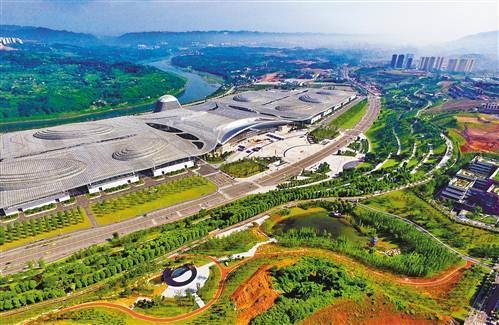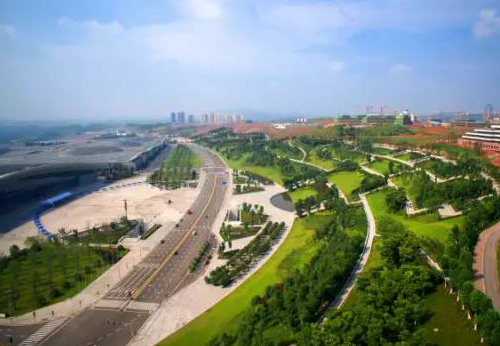Sponge cities absorb attention at annual session
Sun Hui
Updated:2017-03-15
chinadaily.com.cn
During this year’s annual session Premier Li Keqiang called for the construction of more sponge cities to solve urban flooding in a Government Work Report delivered to the nation’s top legislature on March 5.
It is the first time that sponge cities have been included in a central government’s work report.
Sponge cities require advanced underground pipe network design and construction so that rainwater can be collected and recycled for multiple uses.
Tang Zongwei, deputy director of the Liangjiang New Area Administrative Committee and a deputy to the 12th National People’s Congress, said that Yuelai New City Liangjiang New Area will adopt the environmental-friendly concept in the district’s planning.
Being selected as a pilot city for the national sponge city program in 2015, Liangjiang Yuelai New City is the first district in Chongqing to undergo the construction of sponge squares and areas.
 |
|
The sponge areas in Yuelai New City of Liangjiang New Area built 2015 have already benefited Chongqing and surrounding areas. [Photo/liangjiang.gov.cn] |
In 2016, Yuelai New City completed 19 sponge projects covering an area of 5-square-kilometers (500 hectares), using 1.72 billion yuan ($250 million) in investment. There are currently 29 projects under construction covering a 10-sq-km area.
This year the city is expected to turn more than 20 pavements into soft and spongy ones which can absorb water, as part of its demonstration projects at Yuelai Convention and Exhibition Park, Sponge Ecology Exhibition Center and a series of sponge residential areas, costing 1.98 billion yuan.
 |
|
A rooftop garden at a newly-built residential district of Liangjiang New Area is covered with moss and heather. It can ease up the city’s heat island effect. [Photo/liangjiang.gov.cn] |
After two years construction, Liangjiang is becoming safer, cleaner and smarter, from smart pavements that utilize natural filtration methods to prevent runoff water, to rooftop gardens that cool buildings in the heat of summer. To help solve the stifling heat often experienced in inland China, rooftop gardens use a mixture of moss, heather and shrubs to absorb up to 50 percent of rainwater and reduce temperatures in surrounding areas by up to 2.25 C.
 |
|
An underwater garden designed to look like a beach along the Yangtze River. The plants can survive in both wet and dry environments. [Photo/liangjiang.gov.cn] |
Edited by Owen Fishwick
Video

John Edwards, the UK trade commissioner for China, praised Chongqing over its rise as a burgeoning center in intelligent manufacturing.





